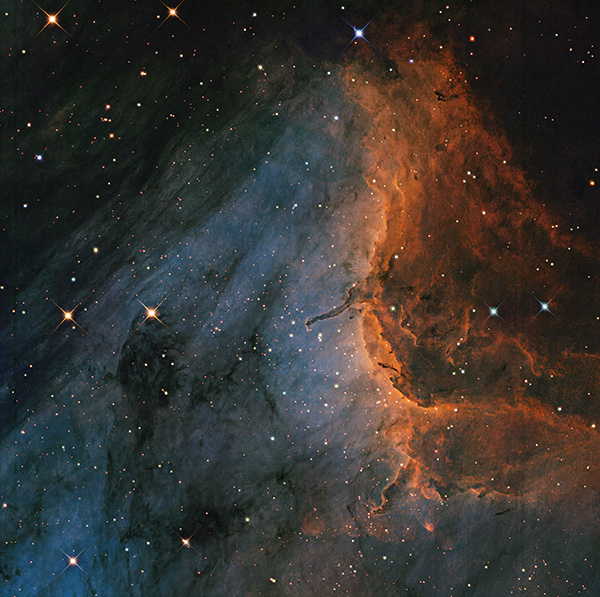
|
Date: October. 1-2-3-4, 2025 - Location: Dark Sky Observatory, Ft. Davis, TX Click on the image below to view at higher resolution. |

|
IC 5070, better known as the Pelican Nebula, is an HII Region of ionized hydrogen gas, glowing in the characteristic red of emission nebulae. The nebula is named for its resemblance to a pelican's head and neck. It is part of a much larger complex of gas and dust that includes the North America Nebula (NGC 7000)[1]. Together these form a striking emission-line region in the constellation Cygnus the Swan[1]. The bright ridge along the "neck" of the pelican, cataloged as IC 5067[2], hosts dense columns and dark dust lanes where star formation is actively taking place. New stars are forming in these massive filaments of gas and dust. The Pelican Nebula lies at an estimated distance of approximately 1,800 light-years from Earth[1]. At the tip of the elephant-trunk-shaped dust pillar in the IC 5067 region lies Herbig-Haro 555 (HH 555)[4]. This is a bipolar jet emanating from a deeply embedded protostar within the pillar. The twin jets are deflected, or "bowed back," by a side-wind or by the expansion flow of the surrounding HII Region[3]. Gas-dynamical simulations of HH 555 suggest that strong ionizing flux and external winds shape the curvature of the jets[3,4]. Additional Herbig-Haro objects (e.g. HH 563, HH 564, HH 565) are also observed in the vicinity, likely associated with outflows excited near the ionization front of the molecular cloud[3]. The image above is known as a mapped, or false, color image and was acquired using narrowband filters. It was assembled using the standard Hubble Palette with SII mapped to Red, Ha mapped to Green and OIII mapped to Blue. Stars were overlaid using broadband RGB data to preserve natural star color and detail. A near true color version of the Pelican Nebula may be view here.
Member of the Dark Sky Observatory Collaborative
References
|